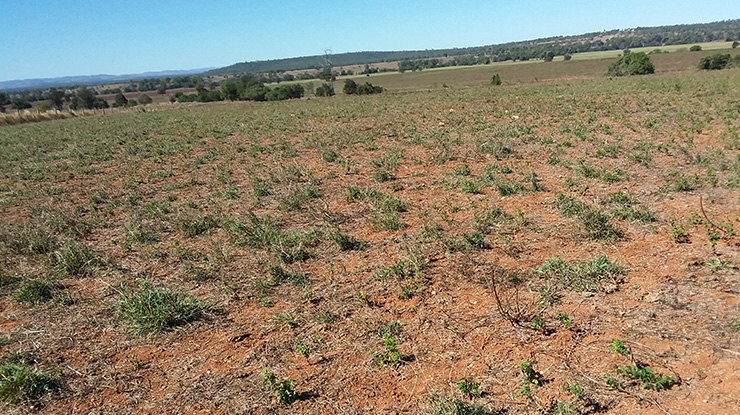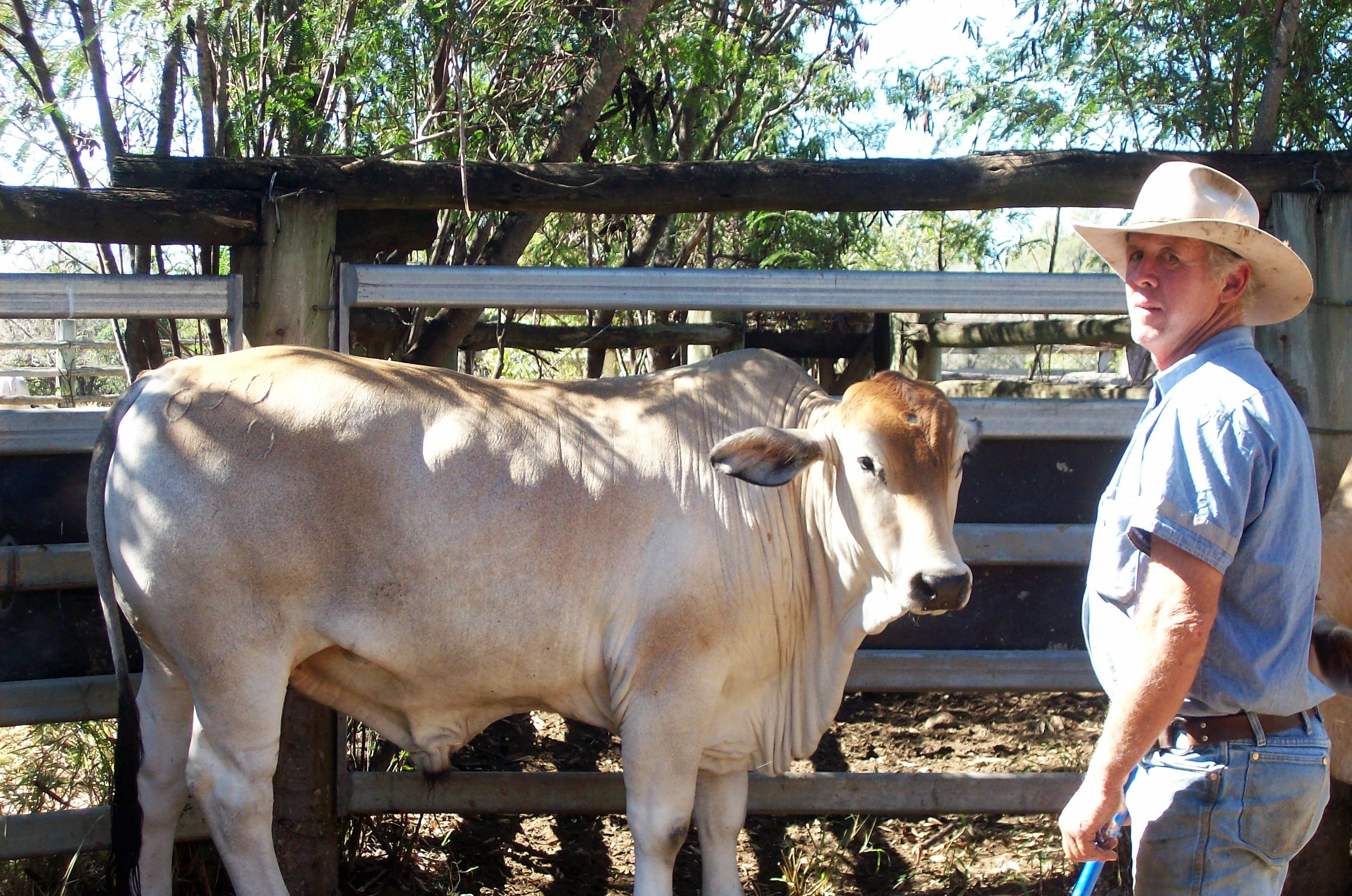 Pasture dieback hit this paddock at ‘Kendah’ in March 2018. Greg planted legume mix and here’s how it looks in July 2020, after being baled in April 2020, yielding 25 round bales/ha.
Pasture dieback hit this paddock at ‘Kendah’ in March 2018. Greg planted legume mix and here’s how it looks in July 2020, after being baled in April 2020, yielding 25 round bales/ha.
Legumes help tackle pasture dieback
When pasture dieback devastated 70% of one of their Central Queensland properties, beef producers Greg and Vicki Lawrence turned to legumes to help fill the gap in their feedbase – and they’ve even tapped into production benefits along the way.
Pasture dieback was first identified at their property, ‘Kendah’, Wowan, in December 2016.
The dieback spread rapidly after rain in March 2017, decimating the Lawrences’ well‑established pastures.
“After the parent grass died, any grass seed that came up would grow a couple of inches, then turn yellow and red and die,” Greg said.
“It was heart‑breaking to watch.”
Pasture dieback impacted 400ha of grass country on the 590ha property and prompted a complete rethink of the family’s on‑farm management program.
|
What is pasture dieback? Pasture dieback is a condition causing death of patches of pasture across a range of sown and native grasses. It’s prevalent across northern, central and south‑east Queensland and has also been reported in northern NSW. Symptoms include:
|
Legume mix
Greg was unsure if re‑sowing buffel grass would have an impact on combatting pasture loss and weed emergence. So, he decided to plough an affected paddock and plant wheat to provide supplementary feed for cattle.
Through October 2017, Greg ploughed more paddocks and planted a mix of legumes including butterfly pea, caatinga stylo, Progardes Desmanthus, burgundy bean and lablab.
“The butterfly pea had already worked in some paddocks so I knew it would work. The burgundy bean has similar characteristics so I presumed it would grow.
“Lablab was a relatively quick cover crop, which meant we would definitely have a feedbase to fall back on if the other plantings didn’t work.
“We planted the legumes like a crop and we’ve had brilliant results so far. We ploughed, waited till it rained, planted and sprayed with the herbicide to combat the weeds.
“Today, 75% of the property has been planted to legumes.”
|
New projects target pasture dieback Seven new MLA‑funded projects focused on pasture dieback will soon get underway, to investigate options for remote sensing and detection, diagnostic analysis of pathogenic organisms present in affected pastures and effective management solutions. This research will help to improve understanding of the recurring nature of pasture dieback so red meat producers can develop more resilient management systems, similar to drought management. While pasture dieback R&D is ongoing, producers in affected regions are being encouraged to undertake good farm hygiene and biosecurity practices around the movement of stock, equipment and materials. |
Production benefits

Central Queensland beef producer Greg Lawrence.
Greg and Vicki are EU‑accredited producers. They breed Droughtmaster/ Charbray cross cattle and sell directly to Teys Australia’s Rockhampton facility.
Cattle are rotationally grazed and usually finished on home‑grown wheat and sorghum in grain feeders in the paddock.
Since the successful establishment of the legumes, Greg’s started turning off cattle without any grain finishing.
“The cattle love the legumes and we haven’t had any issues with bloat,” Greg said.
“We sold two‑year‑old bullocks straight off the legumes last year.
“They would normally have a dressed weight of 370–390kg with grain finishing but they dressed 345kg straight off the legumes, without grain finishing, which is a great result.”
While the legumes filled the gap through summer, looking ahead Greg would like to include a drought‑tolerant grass to provide a good body of grass for winter.
“The caatinga stylo holds its leaf in winter, but most of the other legumes drop their leaf in winter. They’re also more summer active and don’t provide a standover body of feed like buffel grass does.
“I would like to get my American and Gayndah buffel grass back if I can – they keep their nutritional value for a lot longer than any of the other grasses seem to.
“In the paddocks where we’ve planted legumes, whatever grass grows there is pretty good.
“Pasture dieback is still there but instead of having a heap of weeds growing, we’ve got legumes growing instead.”
|
Lessons learned
|



